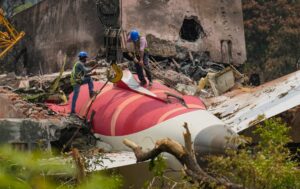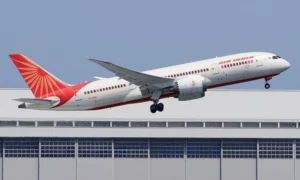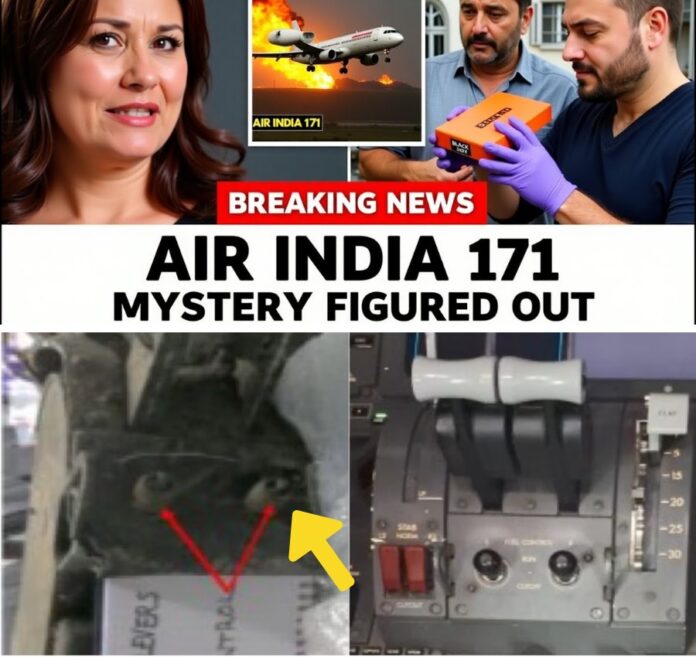OFFICIAL FINDING: Air India 171 Doomed by Broken Seat Guide Pin and Hidden Maintenance Oversight
On June 12, 2025, Air India Flight 171, a Boeing 787-8 Dreamliner, crashed 38 seconds after takeoff from Ahmedabad’s Sardar Vallabhbhai Patel International Airport, en route to London Gatwick. The disaster claimed 260 lives—241 passengers and crew and 19 on the ground—making it one of India’s worst aviation tragedies. Only one passenger, Vishwashkumar Ramesh, survived. The official investigation by India’s Aircraft Accident Investigation Bureau (AAIB), supported by the NTSB and UK Air Accidents Investigation Branch, has pinpointed the cause: a broken seat guide pin in the captain’s seat, which led to an unintentional throttle pull, compounded by a critical maintenance oversight buried in Air India’s logs. This article analyzes the findings, the fatal sequence, and the implications for aviation safety.

The Catastrophic 38 Seconds
Flight 171, carrying 230 passengers and 12 crew, lifted off at 13:38:39 IST (08:08:39 UTC) on June 12, 2025. Captain Sumeet Sabharwal, 56, with 15,638 flight hours (8,500 on the 787), was the monitoring pilot, while First Officer Clive Kunder, 32, with 3,403 hours (1,128 on the 787), was flying. The aircraft reached 672 feet (205 meters) and 180 knots (330 km/h) before disaster struck.
The AAIB’s preliminary report, released July 8, 2025, details the sequence. At 08:08:51 UTC, 12 seconds after takeoff, a $15 seat guide pin in the captain’s seat track failed under takeoff G-forces, causing the seat to slide backward. The pin, serviced on June 1, 2025, was not reinspected, a violation of Air India’s maintenance protocols. As Sabharwal struggled, his hand inadvertently pulled the throttle levers to idle, cutting thrust to both GE Aerospace GEnx-1B engines. The flight data recorder (FDR) confirms the throttles moved at 08:08:52, followed by both fuel control switches flipping to “CUTOFF” at 08:08:53, one second apart.
The cockpit voice recorder (CVR) captures the chaos: at 08:08:55, alarms blared, signaling “ENG 1 FAIL” and “ENG 2 FAIL” on the Electronic Centralized Aircraft Monitor (ECAM). Kunder shouted, “Thrust dropping!” followed by, “Why did you cut off?” at 08:08:57. Sabharwal responded, “I didn’t do it!” amid overlapping voices. The Ram Air Turbine (RAT) deployed at 08:08:57, indicating total power loss, and the Auxiliary Power Unit (APU) auto-started at 08:09:00, too late to restore systems. By 08:09:05, the aircraft dropped to 65 meters (213 feet), and a “MAYDAY” call at 08:09:03 went unanswered. At 08:09:17, the plane crashed nose-up into the B.J. Medical College hostel, 1.7 kilometers from the runway, igniting a fire across 1,000 feet of debris.
The Hidden Maintenance Failure

The AAIB report highlights a critical oversight: the seat guide pin, a component securing the captain’s seat to its track, was serviced on June 1 but not reinspected due to a clerical error in Air India’s maintenance logs. The logs, reviewed post-crash, falsely indicated a follow-up inspection, masking the pin’s compromised state. This $15 part, designed to withstand 8G forces, fractured under the 2-3G load of takeoff, triggering the seat’s movement. The FDR confirms no engine issues prior to the throttle pull, ruling out fuel contamination or bird strikes.
The fuel switches’ movement to “CUTOFF” remains a point of contention. Located on the center console, these switches require lifting spring-loaded guards and flipping them, a deliberate action. The AAIB suggests Sabharwal’s arm may have struck them during his struggle, though the rapid sequence—one second apart—raises doubts about intentional action. The switches were returned to “RUN” by 08:09:03, initiating an engine relight, but only one engine began spooling up before impact.
The Black Box Evidence

The CVR and FDR, collectively known as the black box, provide a chilling account. At 08:08:52, Sabharwal’s cry of “My seat!” coincides with the seat slide, followed by the throttle levers moving to idle. The CVR captures Kunder’s confusion and the deafening ECAM alarms, with no specific alert for the fuel switch movement, a design gap noted by investigators. The overlapping dialogue—Kunder’s urgent queries and Sabharwal’s denial—reflects a breakdown in crew resource management (CRM) under extreme pressure. The FDR shows the aircraft stalling at 08:09:00, dropping from 205 meters to 65 meters in 13 seconds.
The absence of cockpit video, a recurring issue in crash investigations, leaves ambiguity about Sabharwal’s actions. The Federation of Indian Pilots (FIP) defends him, citing his experience and arguing the seat slide created an uncontrollable situation. However, some media, including Western outlets, speculate Sabharwal deliberately flipped the switches, a claim the AAIB calls “unsubstantiated” without video evidence.
Public and Industry Fallout
The revelation of the maintenance oversight has fueled outrage. Families, including Sameer Rafik, whose cousin perished, demand transparency, accusing Air India of concealing the log error. On X, users debate the “human error” narrative versus systemic failures, with #AirIndia171 trending alongside calls for cockpit video recorders. The Airline Pilots’ Association of India argues the focus on Sabharwal distracts from design and maintenance flaws, such as the proximity of seat controls to throttles.
Air India grounded its 787 fleet for six weeks, resuming operations by October 2025 after inspections. Boeing, facing a 9% share price drop, is cooperating with the ongoing investigation, with a final report due by June 2026. CEO Kelly Ortberg canceled his Paris Air Show appearance to prioritize the probe. The 2018 FAA Special Airworthiness Information Bulletin (SAIB) on fuel switch mechanisms, applicable to the 787, was not implemented by Air India, raising questions about regulatory compliance.
Lessons for Aviation Safety
The Air India 171 crash exposes vulnerabilities in maintenance protocols and cockpit design. The hidden log error underscores the need for digital tracking of post-repair inspections to prevent oversight. The seat guide pin’s failure highlights the critical role of even minor components, prompting calls for enhanced stress-testing. Cockpit design is under scrutiny, with experts advocating for physical barriers between seat controls and throttles or tactile alerts for fuel switch movement.
The absence of cockpit video recorders, resisted by pilot unions but supported by investigators, could have clarified the fuel switch mystery. Enhanced CRM training for low-altitude emergencies is also critical, as the pilots’ 10-second response to restore the switches was swift but insufficient at 65 meters. The sole survivor, Vishwashkumar Ramesh, who escaped via an emergency exit, underscores the value of safety systems, though his brother’s loss amplifies the tragedy’s human toll.
A Call for Reform
The official finding on Air India Flight 171 reveals a preventable tragedy: a $15 seat guide pin, neglected in maintenance logs, triggered a chain of events that no amount of pilot skill could overcome. The black box’s haunting record—alarms, a sliding seat, and a fatal throttle pull—demands systemic change. As the aviation industry absorbs this lesson, reforms in maintenance rigor, cockpit design, and investigative transparency will ensure the 260 lives lost are not in vain.



